How to grow a peach from a stone - variety selection, planting and care
Recently, many are thinking about growing a peach. Values for proper planting and care will help you grow a healthy tree with tasty fruit. Let's take a closer look at how to grow a peach from a stone and on your site.
Content:
- Choosing a variety for cultivation
- Methods for sprouting bones
- Planting peach pits
- Sowing a seed into the ground
- Peach transplant
- Transplanting to a permanent place
- Wood care tips
Choosing a variety for cultivation
To grow a peach from a stone, the following conditions are followed:
- Peach varieties are selectedwhich are better acclimatized and more suitable for the weather conditions of the region.
- The tree from which the fruits are taken must be rooted (not grafted). This will give you a better chance of getting a peach with the characteristics of the mother plant.
- Fruits are chosen healthy, ripe, large.
Varieties of different ripening periods are selected:
| Name | Features of the variety |
| Cardinal | Fruit weight 140 g, mid-season, very tasty, afraid of frost. |
| Amsden | Frost resistant. |
| Kiev early | Frost-resistant, quickly recovers after freezing, the weight of the fruit is 100 g, is affected by curliness. |
| Seedling Schlicht | Far Eastern non-covering variety with sweet fruits weighing up to 100 g. |
| Primorsky oblong | Far Eastern variety of pleasant taste, fruit weight 50 g. |
| Novoselovsky | Ripens in the 3rd decade of July, very frost-resistant, fruit weight up to 70 g. |
| Irganai late | Fruits are juicy, weighing up to 160 g. |
| Redhaven | Early ripe, winter-hardy, fruitful (up to 100 kg of fruits per tree). |
| Nobles | High-yielding, late ripening. |
| Myra | A productive Latvian self-fertile variety, winter-hardy, ripens at the end of July. |
| Kremlin | High-yielding, mid-season, winter-hardy, fruit weight up to 200 g. |
| Collins | Mid-season |
| Grisborough | Average winter hardiness |
| Siberian | The stone is separated, late variety, stored in the basement for up to 3 weeks. |
| Fury | Frost-resistant (up to 28 °), fruits weighing up to 300 g can be stored up to 6 days |
Methods for sprouting bones
The bones are thoroughly washed and dried so that they do not become moldy. They are hidden for storage in a cool place with low humidity. Prepare for germination in one of the following ways:
| Way | Features of the method |
| Cold way | Stratify in a basement, refrigerator, or other cool place. Fill a shallow dish with wet sand. Peach pits are placed in it. Stir them periodically to prevent fungal infections. They keep the sand wet, but do not overmoisten. After 3 or 4 months, sprouts will appear from the seeds. |
| Fast way | In order for the seeds to germinate in the fall, they carefully damage their cover. Take out the seeds, fill them with warm water and incubate for 3 days. The water is changed every day. |
| Warm way | First, stratification is carried out for 2 weeks, then non-germinated seeds are planted in separate pots. |
Planting peach pits
After carrying out the preparatory procedures, the bones are planted in the ground. Take pots, the depth of which allows you to place a bone or seed to a depth of 8 cm. The soil should be loose and nutritious.There must be drainage holes at the bottom of the pot.
Cover the dishes with the planted peach seeds with a plastic bag. Every day they are ventilated by removing the bag and leaving it open for a while. This will protect against air stagnation, prevent fungi and other pathogens from multiplying. Instead of a film, you can take glass or build a mini-greenhouse.
Pots with seeds are placed in a bright place, they need a temperature of 25 ° C for germination.
After the shoots appear on the soil surface, reach several centimeters, gradually remove the shelter. They accustom the plants to environmental conditions, keep the soil in the pot moist. Seedlings that are planted in pots in winter or early spring are transplanted into open ground for rearing.
You can immediately plant the seeds in a container. To do this, prepare the soil from humus, peat and sand in equal parts. Add two pieces of leafy earth. If there are no components, they buy a mixture for growing seedlings, mix it with river sand.
I plant the bone to a depth of 8 cm. Water it. Install in a cool place, such as a cellar. In winter, it is enough to maintain a temperature of 4 degrees. This is how stratification takes place. In the spring, the container is moved outside or indoors with a temperature of 15 degrees. Then the temperature of the content is increased to 25 degrees. If you follow all the rules, in 2 months the shoot will grow 50 cm in height.
Sowing a seed into the ground
Sometimes peach seeds are planted directly in the open ground. In this case, they are not preliminarily stratified. They are planted in autumn, October or November. This is how the seeds undergo natural stratification. In the northern regions, the soil above the sown seeds is covered with humus or a layer of dry leaves 10 cm thick. In the southern regions, the threat of freezing is less, but here the risk of flooding is higher.
Choose a well-lit place in the garden, protected from northern winds, drafts by other trees, walls of houses or fences. It is desirable that the selected place is located on a small hill. Then the peach will be less prone to getting wet.
The soil must be loose and fertile. After all, the bone begins to germinate, first forming a root, and then a stem. In heavy, nutrient-poor soil, seeds cannot germinate. Therefore, they begin to prepare the site six months before planting. Add 2 buckets of humus or compost per square meter of area. Sand is added on clay soils. Dig it to the depth of the bayonet. Peach pits are planted in rows or groups, in any order. The distance between them is at least 25 cm, the planting depth is 8 cm.
Be sure to mark the area on which the seeds are planted with pegs so that it is easy to find seedlings in the spring.
In the spring, the seeds will begin to sprout. Some of them will disappear, the strongest will ascend. Thus, natural selection will take place. The remaining seedlings will be more hardy and stronger than those grown indoors. At this time, it is very important not to forget about them and not to deprive them of their care and attention. The soil around the seedlings is regularly loosened and watered. And when the seedlings grow up, they are covered with a layer of mulch 10 cm high. It will protect delicate shoots from the bright sun and retain more moisture in the ground.
Sometimes peaches are sown in the meadow garden method. The seeds are arranged in rows, the distance between which is 2 m, and in rows - 50 cm. This method is used when growing peaches in large areas. Several seeds are sown in one hole. After they germinate, the 3 strongest shoots are left, the rest are removed. The next year, one sprout is left.
Peach transplant
A seedling cannot grow in one container all the time. During the growing period, it needs to be transplanted 3 times:
- The first time is transplanted when the plant has 10 leaves. To do this, dig the plant out of the ground, cut off its root a little.Its length after pruning is 6 cm. This contributes to the active growth of the root system.
- The second time is transplanted when the height of the seedling is 90 cm. At the same time, they begin to form the crown of the tree, cutting off the central conductor.
- The third time is transplanted to a permanent place after reaching a height of 1 m.
The transplant is carried out in the spring, when the soil warms up well, or in the fall. The distance between trees is at least 2 m.
More information about growing peaches from the stone can be found in the video:
Transplanting to a permanent place
Seedlings are transplanted to a permanent place after they reach a height of 1 m. The place is chosen in the same way as for planting seeds. Prepare a hole 70 cm deep or more if the root is long. The selected soil is mixed with humus or compost, which is brought into one tree by 3 buckets. Mineral fertilizers are added.
A low mound is poured at the bottom of the pit. A seedling is immersed in the hole. Smooth out the roots around the mound. Carefully sprinkle with earth, making sure that the roots do not break off. Press the ground tightly to fill all the voids.
Growing problems
When growing a peach from a seed, you need to be prepared for the fact that as a result, its fruits will not be the same as those of the mother plant. Apricot may grow at all. But in this case, it is easier to reject it, because its apricot and peach leaves are not similar to each other.
Caring for peach seedlings consists in regular watering, removing weeds, feeding. If the seedling is rarely watered, its root system can dry out, leading to the death of the plant. In the second half of August, watering is reduced, and then they stop watering completely. If this is not done, leaf buds can grow, which will adversely affect the development of the plant for the next year. They are fed every 3 weeks. They begin to apply fertilizers only after the plant takes root and begins to form leaves.
Mineral fertilizers (nitrogen, potash, phosphorus) and organic matter are introduced in turn.
Prepare a chatterbox, insisting 10 days 1 kg of manure in a bucket of water. Then mix 0.5 liters of the composition with a bucket of water and water the plants. The concentration is reduced by 2 times compared to adult plants. Before and after fertilization, you need to water the soil around the tree with clean water. This will protect the roots from burns.





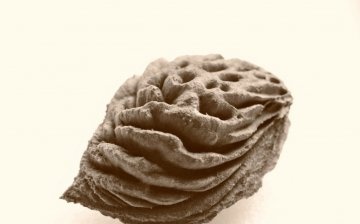
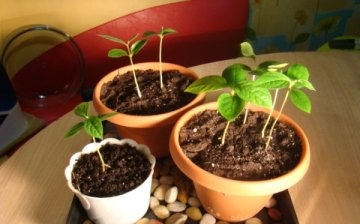
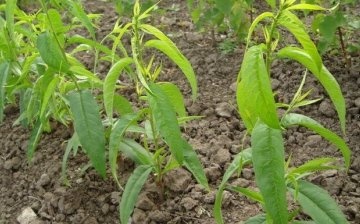
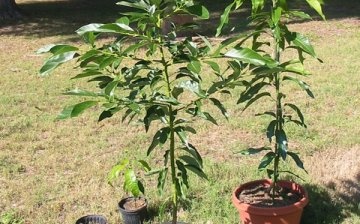
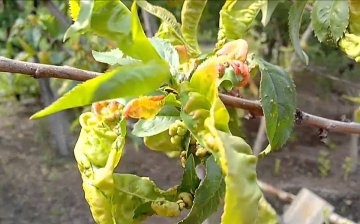







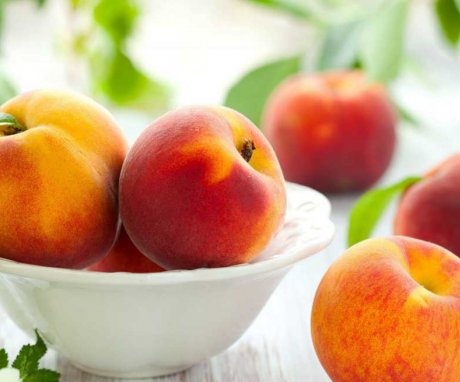
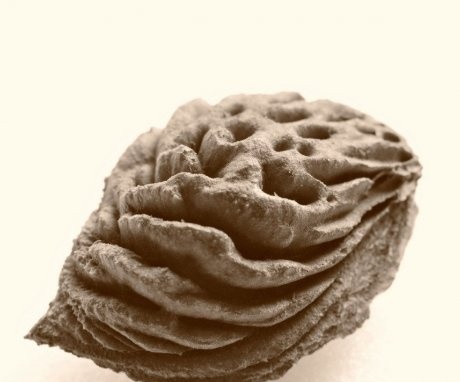
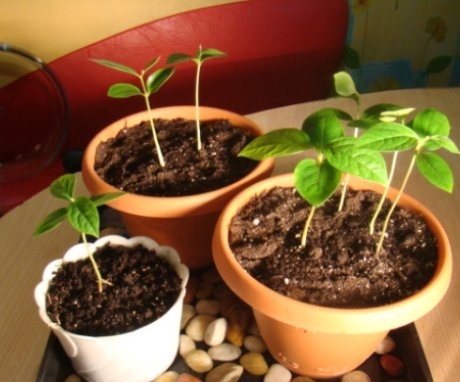

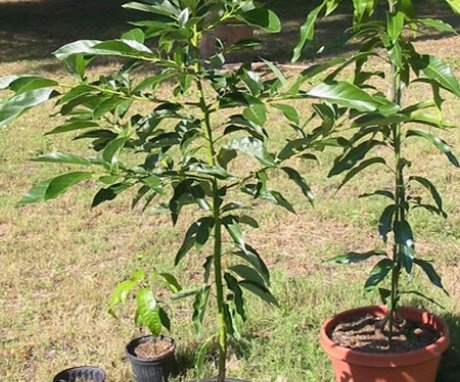
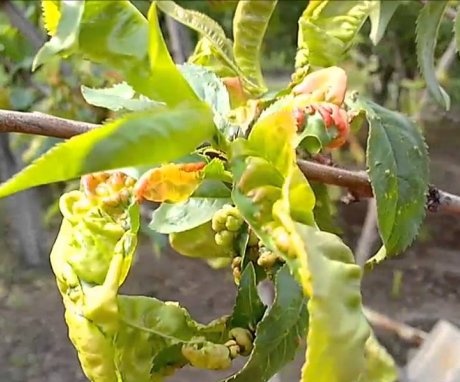
Basically, a peach will grow from almost any seed of a sufficiently ripe fruit. But I think that if this tree bears fruit, then the fruits will be small. It will be necessary to graft a branch from an adult tree of the desired variety.
Peaches grow well, only in the southern regions, and even then not in all, before planting a peach, you need to take into account the climate in which you live and think carefully about everything so that it will not be offensive later.